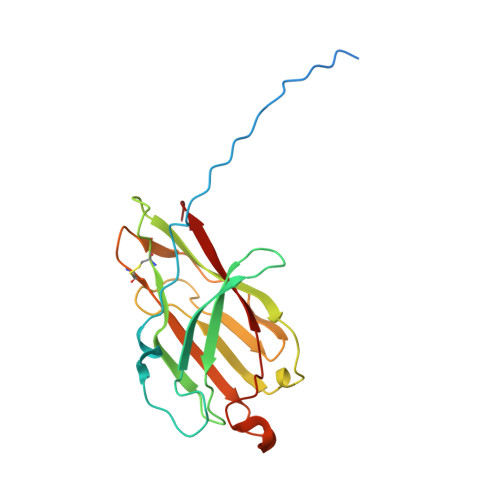Archaeal bundling pili of Pyrobaculum calidifontis reveal similarities between archaeal and bacterial biofilms.
Wang, F., Cvirkaite-Krupovic, V., Krupovic, M., Egelman, E.H.(2022) Proc Natl Acad Sci U S A 119: e2207037119-e2207037119
- PubMed: 35727984
- DOI: https://doi.org/10.1073/pnas.2207037119
- Primary Citation of Related Structures:
7UEG - PubMed Abstract:
While biofilms formed by bacteria have received great attention due to their importance in pathogenesis, much less research has been focused on the biofilms formed by archaea. It has been known that extracellular filaments in archaea, such as type IV pili, hami, and cannulae, play a part in the formation of archaeal biofilms. We have used cryo-electron microscopy to determine the atomic structure of a previously uncharacterized class of archaeal surface filaments from hyperthermophilic Pyrobaculum calidifontis. These filaments, which we call archaeal bundling pili (ABP), assemble into highly ordered bipolar bundles. The bipolar nature of these bundles most likely arises from the association of filaments from at least two different cells. The component protein, AbpA, shows homology, both at the sequence and structural level, to the bacterial protein TasA, a major component of the extracellular matrix in bacterial biofilms, contributing to biofilm stability. We show that AbpA forms very stable filaments in a manner similar to the donor-strand exchange of bacterial TasA fibers and chaperone-usher pathway pili where a β-strand from one subunit is incorporated into a β-sheet of the next subunit. Our results reveal likely mechanistic similarities and evolutionary connection between bacterial and archaeal biofilms, and suggest that there could be many other archaeal surface filaments that are as yet uncharacterized.
Organizational Affiliation:
Department of Biochemistry and Molecular Genetics, University of Virginia, Charlottesville, VA 22903.














